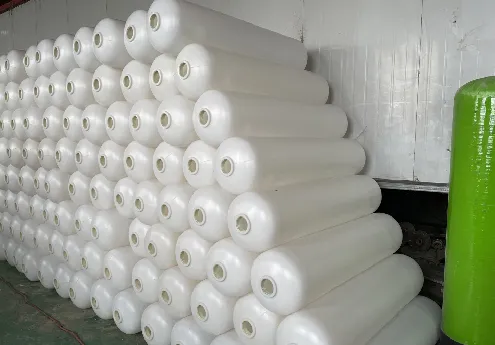loading...
- No. 9, Xingyuan South Street, Dongwaihuan Road, Zaoqiang County, Hengshui, Hebei, China
- admin@zjcomposites.com
- +86 15097380338
- Welcome to visit our website!
Exploring the Benefits and Applications of GRP Sandwich Panels in Construction
Understanding GRP Sandwich Panels An Overview
GRP (Glass Reinforced Plastic) sandwich panels have become an increasingly popular choice in various construction and manufacturing sectors due to their impressive properties and versatility. These panels are engineered composite materials consisting of outer skins made from GRP and a lightweight core, typically made from materials such as polystyrene, polyurethane, or honeycomb structures. This unique combination provides enhanced mechanical strength while maintaining low weight, making GRP sandwich panels an ideal solution for many applications.
Structure and Composition
The composition of GRP sandwich panels is pivotal to their performance. The outer layers, often referred to as skins, are made using glass fibers embedded in a plastic matrix. This structure imparts high tensile strength, resistance to corrosion, and excellent durability. The core material varies based on the specific requirements of the application. For instance, polystyrene cores are commonly used for thermal insulation, while honeycomb cores offer exceptional strength-to-weight ratios.
The manufacturing process of GRP sandwich panels typically involves techniques such as hand lay-up, vacuum infusion, or compression molding, ensuring that the materials bond effectively under controlled conditions. This results in a panel that can withstand significant stresses while remaining lightweight, a crucial factor in many construction and transportation applications.
Key Benefits
One of the most significant advantages of GRP sandwich panels is their thermal insulation properties. The lightweight cores provide excellent thermal resistance, ensuring that the interiors of buildings or vehicles remain comfortable and energy-efficient. This characteristic makes them suitable for applications in cold storage, refrigeration units, and even in the construction of eco-friendly structures.
Additionally, GRP sandwich panels are inherently resistant to water, chemical corrosion, and UV degradation. This resistance significantly extends their lifespan, reducing maintenance costs and enhancing overall building longevity. As a result, they're often utilized in environments where exposure to harsh chemicals or moisture is prevalent, such as in industrial settings, marine constructions, and food processing facilities.
grp sandwich panels

Applications
The versatility of GRP sandwich panels is showcased in their wide range of applications. In the construction industry, they are often employed for building facades, roofs, and internal partition walls. Their lightweight nature allows for easy installation, minimizing the need for heavy lifting equipment and accelerating overall construction timelines.
In the transportation sector, GRP sandwich panels are frequently used in manufacturing truck bodies, trailers, and caravans. The low weight contributes positively to fuel efficiency, making vehicles more economical to operate. Moreover, these panels are used in the aerospace sector for parts that require high strength but low weight, such as interior panels and cabin structures.
Environmental Considerations
As global awareness of environmental issues rises, the demand for sustainable building materials is increasing. GRP sandwich panels align well with these trends, as they often utilize recyclable materials and can contribute to achieving LEED certification in construction projects. Their energy efficiency properties also support eco-friendly initiatives by reducing the carbon footprint of buildings and vehicles.
Conclusion
In conclusion, GRP sandwich panels represent a remarkable advancement in composite material technology, offering superior performance characteristics that cater to a wide spectrum of industries. Their blend of strength, lightweight design, durability, and thermal efficiency makes them an ideal choice for modern construction and manufacturing needs. As industries continue to seek material solutions that are both effective and environmentally friendly, the adoption of GRP sandwich panels is likely to increase, paving the way for a more sustainable future. Whether in building construction, transportation, or specialized industrial applications, GRP sandwich panels are poised to play a crucial role in meeting the challenges of contemporary engineering and design.
-
GRP Structures: The Future of Lightweight, High-Performance EngineeringNewsJun.20,2025
-
FRP Water Tank: High-Performance Storage for Corrosive and Clean Water SystemsNewsJun.20,2025
-
FRP Square Tube: The New Industry Standard for Chemical and Structural ApplicationsNewsJun.20,2025
-
FRP Pultruded Profiles: The Ultimate Choice for Lightweight Structural StrengthNewsJun.20,2025
-
FRP Handrails: The Safer, Smarter, and Stronger Choice for Modern InfrastructureNewsJun.20,2025
-
FRP Grating: The Smart Solution for Durable, Lightweight Industrial FlooringNewsJun.20,2025
-
Why Choose a Galvanized Water Tank for Your Storage NeedsNewsMay.21,2025
